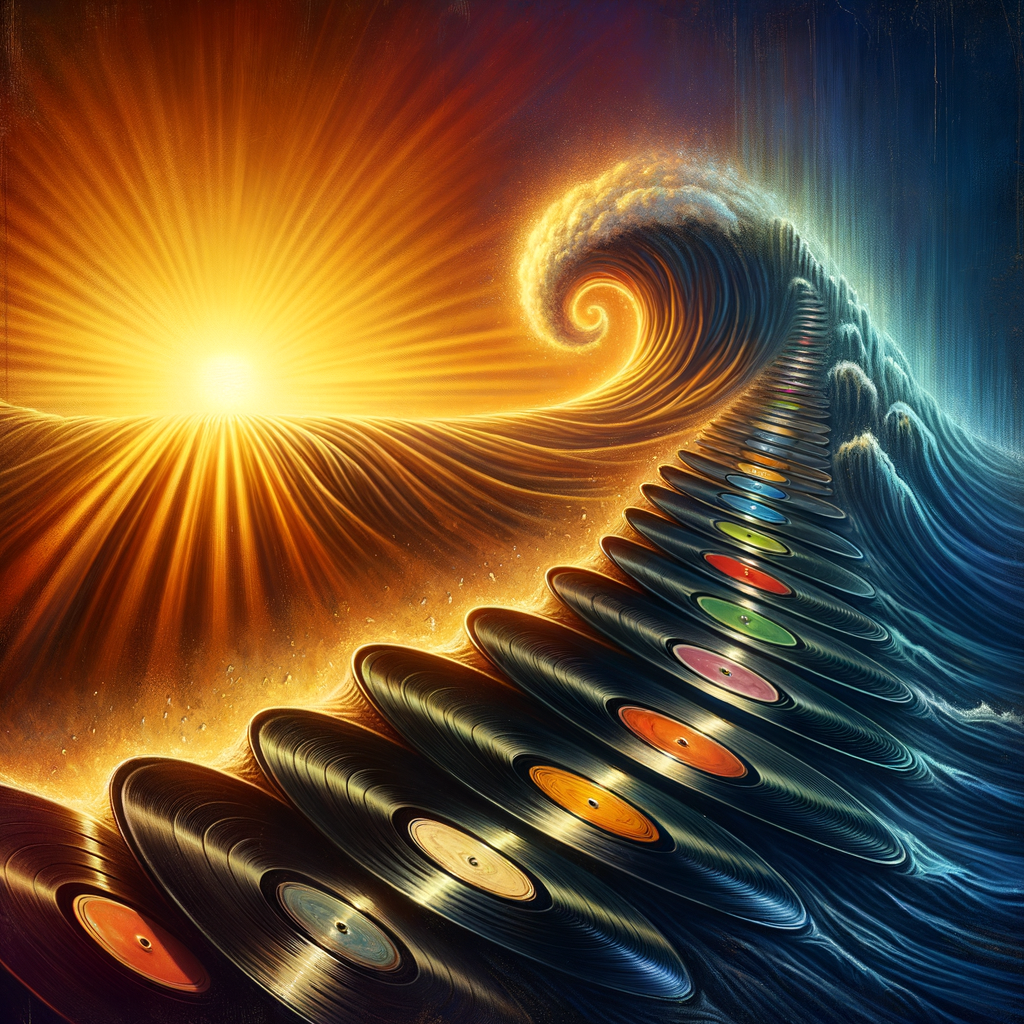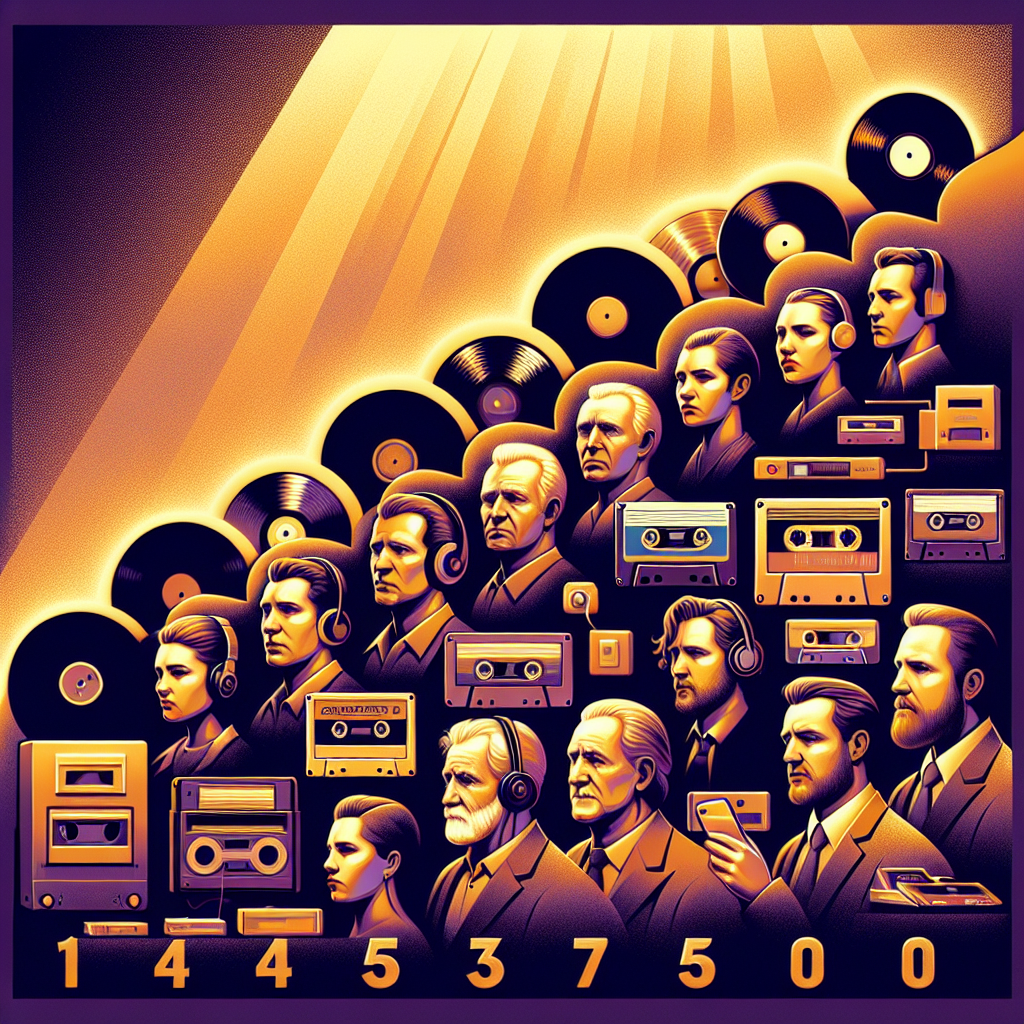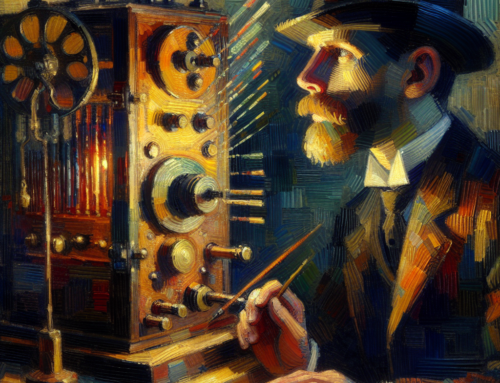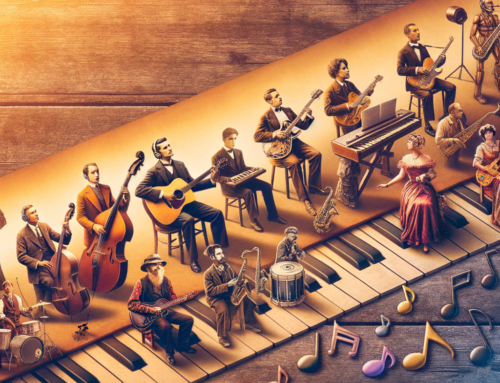-
Table of Contents
“From Grooves to Streams: Tracing the Journey of Music Consumption”
Introduction
The evolution of music consumption has been a fascinating journey, reflecting technological advancements and changing cultural landscapes. From the tactile experience of vinyl records to the intangible convenience of streaming services, each era has transformed how audiences engage with music. Vinyl, with its analog warmth and large album art, dominated the mid-20th century, offering a ritualistic listening experience. The advent of cassette tapes and CDs in the late 20th century introduced portability and durability, revolutionizing personal music collections. The digital age brought MP3s and file-sharing, democratizing access but challenging traditional industry models. Today, streaming platforms like Spotify and Apple Music provide instant access to vast music libraries, reshaping consumption into a seamless, on-demand experience. This evolution not only highlights technological progress but also underscores shifts in listener preferences and the music industry’s adaptation to an ever-changing landscape.
The Rise and Fall of Vinyl: A Nostalgic Journey

Growing up, I remember the distinct crackle of a vinyl record as it spun on my parents’ turntable. There was something almost magical about the way the needle would drop, and music would fill the room, rich and warm. Vinyl records were more than just a medium for music; they were a ritual, a tangible connection to the artists and their work. Each album cover was a piece of art, and flipping through a collection was like browsing through a gallery of sound. But as time marched on, the way we consumed music began to change, and vinyl, once the king of the music world, started to fade into the background.
The decline of vinyl began with the rise of the cassette tape in the late 1970s and early 1980s. Cassettes were compact, portable, and allowed for the creation of mixtapes, which became a cultural phenomenon in their own right. Suddenly, music was something you could take with you, and the convenience was hard to resist. Yet, even as cassettes gained popularity, vinyl held its ground, cherished by audiophiles and collectors who swore by its superior sound quality.
Then came the compact disc, or CD, in the mid-1980s, and the music industry was forever changed. CDs offered crystal-clear sound and durability that vinyl couldn’t match. They were sleek, modern, and quickly became the preferred format for music lovers everywhere. Record stores began to phase out their vinyl sections, and it seemed like the days of the record player were numbered. However, even as CDs dominated the market, there was a certain nostalgia for the tactile experience of vinyl that never quite disappeared.
As the digital age dawned, music consumption underwent yet another transformation. The advent of MP3s and digital downloads in the late 1990s and early 2000s made music more accessible than ever before. Suddenly, entire music libraries could fit in the palm of your hand, and the idea of owning physical copies of music began to feel outdated. This shift was further accelerated by the rise of streaming services like Spotify and Apple Music, which offered instant access to millions of songs for a monthly fee. The convenience was unparalleled, and for many, it was hard to imagine going back to any other way of listening to music.
Yet, in a surprising twist, vinyl has experienced a resurgence in recent years. Perhaps it’s the nostalgia factor, or maybe it’s the desire for a more authentic listening experience in an increasingly digital world. Whatever the reason, vinyl sales have been steadily climbing, and record stores are once again stocking their shelves with new releases and reissues. For some, collecting vinyl is a way to connect with the past, while for others, it’s a new discovery, a chance to experience music in a way that feels more intentional and immersive.
In reflecting on this journey from vinyl to streaming, it’s clear that each format has its own unique appeal. While streaming offers convenience and variety, vinyl provides a sense of connection and ritual that digital formats can’t quite replicate. As music consumption continues to evolve, it’s fascinating to see how old and new can coexist, each offering something valuable to the ever-changing landscape of how we experience music.
The Cassette Era: Personalizing Music on the Go
The evolution of music consumption has been a fascinating journey, marked by significant shifts in how we engage with our favorite tunes. One of the most memorable phases in this journey was the cassette era, a time when music became more personal and portable than ever before. For many, cassettes were the first introduction to the idea of taking music on the go, a concept that seems almost quaint in today’s world of instant streaming.
Back in the day, cassettes were revolutionary. They were small, durable, and, most importantly, they allowed us to create our own playlists long before the term even existed. Unlike vinyl records, which required a stationary turntable, cassettes could be played in portable players, making it possible to listen to music while walking, driving, or just lounging in the park. This newfound mobility was a game-changer, offering a level of freedom that was previously unimaginable.
Moreover, cassettes introduced us to the art of the mixtape. Creating a mixtape was a deeply personal endeavor, a way to express oneself through a carefully curated selection of songs. Whether it was a compilation of love songs for a crush or a collection of upbeat tracks for a road trip, mixtapes were a reflection of our personalities and emotions. The process of recording songs from the radio or other cassettes required patience and precision, but the end result was always worth the effort. There was something magical about handing someone a mixtape, knowing that it was a unique gift that couldn’t be replicated.
As we reminisce about the cassette era, it’s impossible not to mention the iconic Walkman. This portable cassette player became a cultural phenomenon, symbolizing the freedom to enjoy music anywhere and anytime. The Walkman was more than just a device; it was a statement of independence and individuality. With headphones on and a cassette in the player, the world around us seemed to fade away, leaving just us and the music. It was an intimate experience, one that many of us still cherish.
However, as with all technology, the cassette era eventually gave way to new innovations. The rise of CDs in the late 1980s and early 1990s marked the beginning of the end for cassettes. CDs offered superior sound quality and greater storage capacity, making them an attractive alternative. Yet, despite their decline, cassettes left an indelible mark on the music industry and on our hearts. They taught us the value of personalization in music consumption, a lesson that continues to resonate in today’s digital age.
In reflecting on the cassette era, it’s clear that it was a pivotal moment in the evolution of music consumption. It was a time when music became more than just a passive experience; it became a personal journey. While technology has continued to evolve, offering us new ways to access and enjoy music, the spirit of the cassette era lives on. It reminds us of a time when music was not just something we listened to, but something we actively engaged with and cherished. As we move forward in this ever-changing landscape, it’s comforting to know that the essence of those cassette days still influences how we connect with music today.
The CD Revolution: Digital Sound and Portability
When I think back to the days when CDs first hit the scene, it’s like opening a time capsule to a pivotal moment in music history. The CD revolution was a game-changer, a digital sound wave that swept over the music industry and changed how we consumed music forever. Before CDs, vinyl records were the kings of the music world, with their warm, analog sound and large, tactile album covers. But as much as I love the nostalgia of vinyl, I have to admit that CDs brought something fresh and exciting to the table.
The compact disc, or CD, was introduced in the early 1980s, and it didn’t take long for it to become the preferred format for music lovers everywhere. One of the most significant advantages of CDs was their digital sound quality. Unlike vinyl, which could be prone to scratches and pops, CDs offered a crisp, clear listening experience that was free from the imperfections of analog formats. This was a revelation for audiophiles who craved a purer sound, and it was a big part of why CDs caught on so quickly.
Another major selling point of CDs was their portability. Remember those bulky vinyl records? They were great for home listening, but not exactly convenient for on-the-go music enjoyment. CDs, on the other hand, were compact and easy to carry around. With the advent of portable CD players, like the iconic Sony Discman, music fans could take their favorite albums with them wherever they went. This newfound portability was a huge draw, especially for younger listeners who were always on the move.
As CDs became more popular, they also started to change the way we interacted with music. The format allowed for longer albums, with up to 74 minutes of music on a single disc. This gave artists more freedom to experiment and create more expansive works. Plus, CDs often came with bonus tracks, remixes, and other extras that weren’t available on vinyl. It was like getting a little something extra with your purchase, and who doesn’t love that?
Of course, the rise of CDs also had a significant impact on the music industry itself. Record stores had to adapt to the new format, and many artists and labels embraced the change, reissuing classic albums on CD to reach a new audience. It was a time of transition, but also one of excitement and possibility. The CD revolution opened up new avenues for music distribution and consumption, setting the stage for the digital age that was just around the corner.
Looking back, it’s clear that CDs were a crucial stepping stone in the evolution of music consumption. They bridged the gap between the analog past and the digital future, paving the way for the streaming services we rely on today. While streaming has its own set of advantages, there’s something undeniably special about the CD era. It was a time when music felt tangible and personal, when album artwork and liner notes were just as important as the songs themselves. So, while I might not listen to CDs as much these days, I’ll always have a soft spot for those shiny discs that changed the way we experienced music.
The Streaming Age: Instant Access and Global Reach
The way we consume music has undergone a radical transformation over the decades, and nowhere is this more evident than in the streaming age. Remember the days when you had to save up to buy a vinyl record or a CD? Those were the times when music was a tangible experience, something you could hold in your hands. Fast forward to today, and music is just a tap away, thanks to streaming services like Spotify, Apple Music, and countless others. It’s fascinating how technology has reshaped our relationship with music, making it more accessible than ever before.
Streaming has revolutionized the way we listen to music, offering instant access to millions of songs from artists all over the world. Gone are the days of waiting for a new album release at the local record store. Now, you can listen to the latest tracks the moment they drop, no matter where you are. This instant access has not only changed our listening habits but also how artists release their music. Singles are often released more frequently, keeping fans engaged and eager for more. It’s a win-win situation for both artists and listeners.
Moreover, the global reach of streaming platforms has opened up a world of music that many of us might never have discovered otherwise. With curated playlists and algorithm-driven recommendations, it’s easier than ever to stumble upon a new favorite artist from a different part of the world. This has led to a more diverse music scene, where genres blend and cultural influences mix, creating something truly unique. It’s like having a personal DJ who knows your taste and is always ready to introduce you to something new.
However, while streaming has made music more accessible, it has also sparked debates about the value of music and how artists are compensated. Many musicians argue that the revenue from streaming is not enough to sustain their careers, especially for independent artists who don’t have the backing of major record labels. This has led to discussions about fair compensation and the need for a more equitable system that benefits both artists and listeners. It’s a complex issue, but one that is crucial to the future of music.
Despite these challenges, the streaming age has undeniably democratized music consumption. Anyone with an internet connection can access a vast library of music, breaking down barriers that once existed due to geography or economic status. This democratization has also empowered independent artists, who can now reach a global audience without the need for a traditional record deal. Social media and streaming platforms have become powerful tools for artists to build their fanbase and share their music with the world.
In conclusion, the streaming age has transformed music consumption in ways that were unimaginable just a few decades ago. It has made music more accessible, diverse, and global, while also raising important questions about the value of music and how artists are compensated. As we continue to navigate this digital landscape, it’s essential to find a balance that supports both artists and listeners, ensuring that music remains a vibrant and vital part of our lives. So, next time you hit play on your favorite streaming app, take a moment to appreciate the incredible journey music has taken to get to your ears.
Q&A
1. **Question:** What was the primary medium for music consumption before digital formats?
**Answer:** Vinyl records were the primary medium for music consumption before digital formats, popular from the early 20th century until the late 1980s.
2. **Question:** How did the introduction of the compact disc (CD) impact music consumption?
**Answer:** The introduction of the compact disc (CD) in the 1980s revolutionized music consumption by offering higher sound quality, greater durability, and more convenience compared to vinyl and cassette tapes, leading to a significant decline in the sales of these older formats.
3. **Question:** What role did the internet play in the evolution of music consumption?
**Answer:** The internet played a crucial role in the evolution of music consumption by enabling digital downloads and file sharing, which paved the way for online music stores and eventually streaming services, transforming how people access and listen to music.
4. **Question:** How has streaming changed the music industry compared to previous formats?
**Answer:** Streaming has drastically changed the music industry by providing instant access to vast music libraries, altering revenue models from physical sales to subscription and ad-supported services, and influencing how artists release and promote their music.The evolution of music consumption from vinyl to streaming represents a significant transformation in how audiences access and experience music. Initially, vinyl records offered a tangible and analog listening experience, characterized by their physicality and the ritual of playing a record. The advent of cassette tapes and CDs introduced portability and durability, allowing music to be enjoyed in more diverse settings. The digital revolution, marked by the rise of MP3s and digital downloads, further democratized music access, enabling vast collections to be stored and shared easily. Today, streaming services have revolutionized the landscape by providing instant access to millions of songs on demand, personalized recommendations, and the ability to discover new music effortlessly. This shift has not only changed consumer habits but also impacted the music industry, influencing how artists release music and engage with their audiences. Overall, the journey from vinyl to streaming highlights the dynamic interplay between technology and cultural consumption, continually reshaping the music experience.


